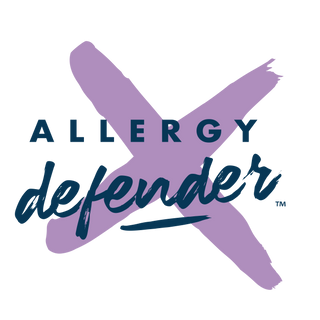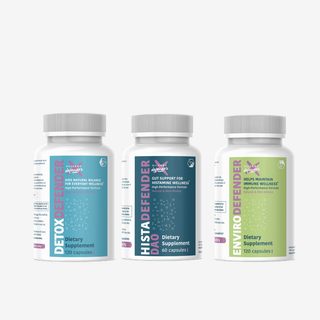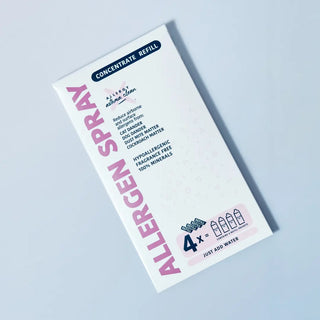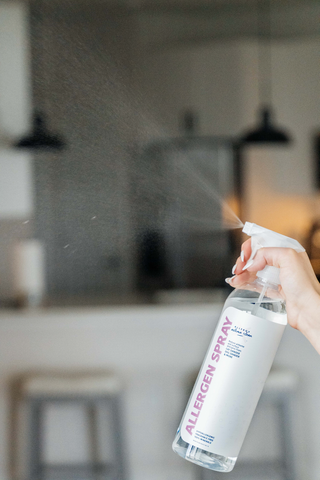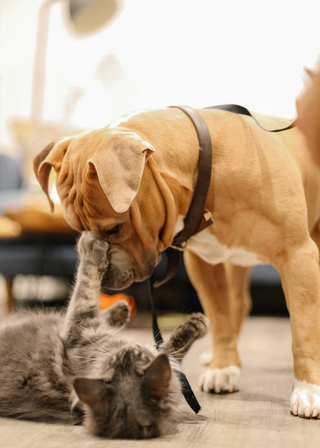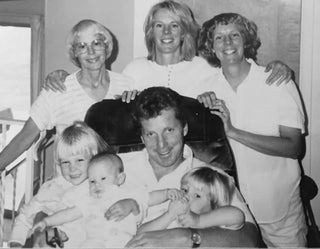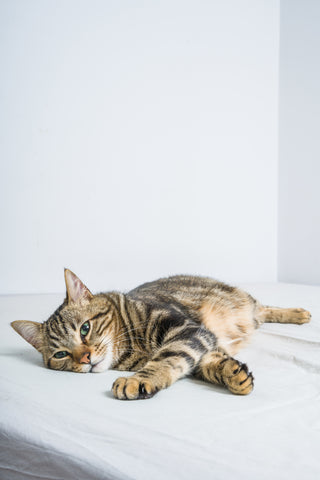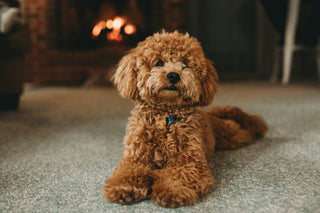Is your feline friend constantly sneezing and showing signs of discomfort? It's not all in your head. Your cat could be allergic! Allergies in cats are more common than you might think, and understanding how to manage them can lead to a happier and healthier cat, and a worry free you. In this article, we'll unmask the sneezes and delve into the world of cat allergy symptoms. From itchy skin to watery eyes and excessive scratching, cats can exhibit a variety of symptoms when they are allergic to certain substances. Identifying these symptoms early on is crucial in order to provide the necessary care and relief for your furry companion. But don't worry, we've got you covered. In this comprehensive guide, we'll explore the different types of cat allergies, such as food, environmental, and believe it or not, flea allergies. We'll also look at effective management strategies, including proper diet, environmental modifications, and medical treatments. But first, did you know allergies in cats can develop at any point in a cat's life? And just like us, some cats are more prone to allergies than others, possibly due to genetics.
Understanding Feline Allergies
Cats, just like humans, can develop allergies to certain substances. These substances, known as allergens, can trigger an immune response in your cat's body, leading to a range of uncomfortable symptoms. Allergies in cats can be broadly classified into three main categories: food allergies, environmental allergies, and flea allergies.
Food allergies occur when a cat's immune system reacts negatively to a specific ingredient or ingredients in their diet. The most common food allergens for cats include proteins such as beef, chicken, fish, and dairy products.
Environmental allergies, on the other hand, are caused by substances in the cat's environment, such as pollen, dust mites, mold, or certain chemicals.
Finally, flea allergies are a result of a cat's hypersensitivity to flea saliva.
Are Cat Allergy Symptoms Really Increasing?
According to the 2018 State of Pet Health Report (Banfield Hospital research team analyzed data from over 2.5 million dogs and 500,000 cats across Banfield hospitals), flea allergy has been on the rise over the past 10 years, according to the report, with a 12.5 percent increase in dogs and a 67.3 percent increase in cats. Environmental allergies are also on an upward trend, with a 30.7 percent increase in dogs and an 11.5 percent increase in cats over the past decade.1 As of 2018, they state food allergies in cats are about 0.1%.
How do I Know if My Cat has Allergies?
Itchy skin, sneezing, watery eyes, and excessive scratching are some of the most common allergy symptoms in cats. These symptoms can vary in severity and may occur in combination or individually. When a cat is experiencing an allergic reaction, you may notice them constantly licking or biting their paws, rubbing their face against furniture, or even developing sores or lesions on their skin, the poor thing.
Other signs of allergies in cats include hair loss, coughing, wheezing, vomiting, diarrhea, and respiratory difficulties. It might not all be allergies as these symptoms can also be indicative of other health issues, best to consult a vet, if you're unsure.
Ways to Hone in on Your Cat's Food Allergy Symptoms
Once you suspect that your cat may have allergies, the next step is to identify the specific allergens causing the reaction. This can be a challenging task, as cats can be allergic to a wide range of things.
One way to determine food allergies is through an elimination diet. This involves gradually removing potential allergens from your cat's diet and observing their symptoms. If the symptoms improve during the elimination process, you can reintroduce the suspected allergens one at a time to pinpoint the specific trigger. The recommended length of an elimination diet trial for cats with suspected food allergies is typically 8 to 10 weeks.
Here's a breakdown of why this timeframe is important:
Gradual Improvement: It can take time for a cat's body to completely eliminate the offending allergen and for cat allergy symptoms to resolve.
Variable Response: The timeframe for improvement can vary depending on the severity of the allergy and the specific allergen. Some cats might see improvement within a few weeks, while others might take the full 8-10 weeks.
Ruling Out Other Causes: This extended period helps to ensure that other factors, such as parasites or infections, aren't causing the symptoms.
Here's a typical timeline for an elimination diet trial in cats:
- Weeks 1-2: Strict adherence to the elimination diet with the novel protein source recommended by your veterinarian.
- Weeks 3-8: Closely monitor your cat for any signs of improvement in their symptoms, such as reduced itching, less frequent vomiting, or improved skin health.
- Week 8-10: If symptoms resolve completely, a food challenge test might be conducted under veterinary supervision to confirm the specific food allergy.
Environmental allergies include dust mites, pollen and mold spores. Other irritants include cigarette smoke, strong perfumes and cleaning products, cat litter dust and finally fabric softners and dryer sheets. BTW all these irritants aren't good for you either.
- In the case of these kind of cat allergies, it might be necessary to conduct allergy testing. Allergy testing for cats can be done through blood tests or intradermal skin testing. Blood tests measure the levels of specific antibodies in the cat's blood, indicating an allergic response to certain substances. Intradermal skin testing involves injecting small amounts of allergens under the cat's skin and observing any reactions, most likely not too pleasant for your kitty. :(
Allergy-friendly grooming techniques: Regular grooming can help reduce allergens present on your cat's fur and skin. However, it’s important to use allergy-friendly grooming techniques to avoid worsening your cat's symptoms. Opt for gentle, hypoallergenic shampoos and conditioners specifically designed for cats with allergies. Avoid over-bathing, as it can strip the skin of its natural oils and worsen dryness and irritation. Additionally, regular brushing can help remove loose hair and minimize the spread of allergens in your home.
Switch up the litter: Fragrances and dust in litter can irritate cats. Look for a litter that is free of both for a more comfortable litter box experience for your cat.
Supplement remedies for cat allergies: In addition to medical treatments, there are several natural remedies that can provide relief for cats with allergies. Omega-3 fatty acid supplements, such as fish oil, can help reduce inflammation and improve the overall health of your cat's skin and coat. Probiotics can also be beneficial, as they promote a healthy gut and immune system.
Treat the environment, not just their symptoms: With many cat owners seeking natural allergy relief for themselves and their feline companions, a natural solution has emerged: Allergen Spray. Designed to reduce up to 99% of major environmental allergens on surfaces and 95% in the air, this product offers excellent benefits for cats as well. Numerous pet owners specifically buy it for their environmentally sensitive pets and have seen purrfect results! Allergen Spray uses only 100% minerals and no harsh chemicals, making it perfect for the whole family, cats included!
What About Allergies to Fleas?
Flea allergies, also known as Flea Allergy Dermatitis (FAD), can be quite frustrating for both you and your feline friend. Here's a two-pronged approach to dealing with flea allergies in cats:
1. Flea control and prevention:
- This is the absolute foundation of managing flea allergies. Even a single flea bite can trigger a severe reaction in cats with FAD.
- Year-Round prevention: Use a veterinarian-recommended flea preventative medication on your cat all year round, not just during warmer months. This helps prevent flea infestations before they start.
- Choose the right product: Several effective flea prevention medications are available in various forms like topical treatments, oral medications, or collars. Consult your vet to choose the safest and most suitable option for your cat.
- Treat all pets in your home: Fleas can jump between pets, so it's crucial to treat all animals in your home to prevent re-infestation.
- Environmental treatment: Vacuum carpets, furniture, and pet bedding thoroughly. Wash pet bedding in hot water (at least 140°F or 60°C) to kill any flea eggs or larvae. If your veterinarian recommends it, consider using a pet-safe flea spray on carpets and furniture.
2. Soothing the allergic reaction:
- Once fleas are controlled: Focus on managing your cat's allergic reaction caused by past flea bites.
- Antihistamines and steroids: Your veterinarian might prescribe medications like antihistamines or corticosteroids to reduce itching and inflammation.
- Fatty acid supplements: See above under Environmental allergies: Omega-3 Fatty Acids
- Oatmeal baths: Bathing your cat in lukewarm oatmeal water can help soothe irritated skin. Use a gentle, veterinarian-approved oatmeal shampoo and avoid over-bathing, which can dry out your cat's skin.
- Elizabethan collar (cone): In severe cases, an Elizabethan collar might be necessary to prevent your cat from self-traumatizing by scratching or biting at itchy areas.
Additional tips:
- Monitor your cat: Pay close attention to your cat's behavior. Signs of FAD include excessive scratching, hair loss, scabs, or red, inflamed skin. Early detection and treatment can help prevent complications.
- Regular checkups: Schedule regular checkups with your veterinarian to monitor your cat's progress and adjust the treatment plan as needed.
- Patience is key: Managing FAD takes time and a consistent approach. By diligently following these steps, you can significantly improve your cat's comfort and, might we add, your quality of life, too!
Allergy medications for cats? Yes, really.
In some cases, medical treatments may be necessary to manage your cat's allergies effectively. Antihistamines are commonly prescribed to alleviate itching and other allergy symptoms. However, not all antihistamines are safe for cats, so it is crucial to consult with a veterinarian before administering any medication. In more severe cases, corticosteroids or immunosuppressive drugs may be prescribed to control allergic reactions.
Quick Summary
- Identify which allergens your cat is allergic
- Create an allergy management plan
- Utilize a combination of dietary changes, environmental modifications, and medical treatments to help your kitty overcome their cat allergy symptoms
- Relax and enjoy your kitty
1 https://www.avma.org/javma-news/2018-07-15/banfield-few-pets-allergic-food-flea-environmental-allergies-rise Banfield's research team analyzed data from over 2.5 million dogs and 500,000 cats across Banfield hospitals.
